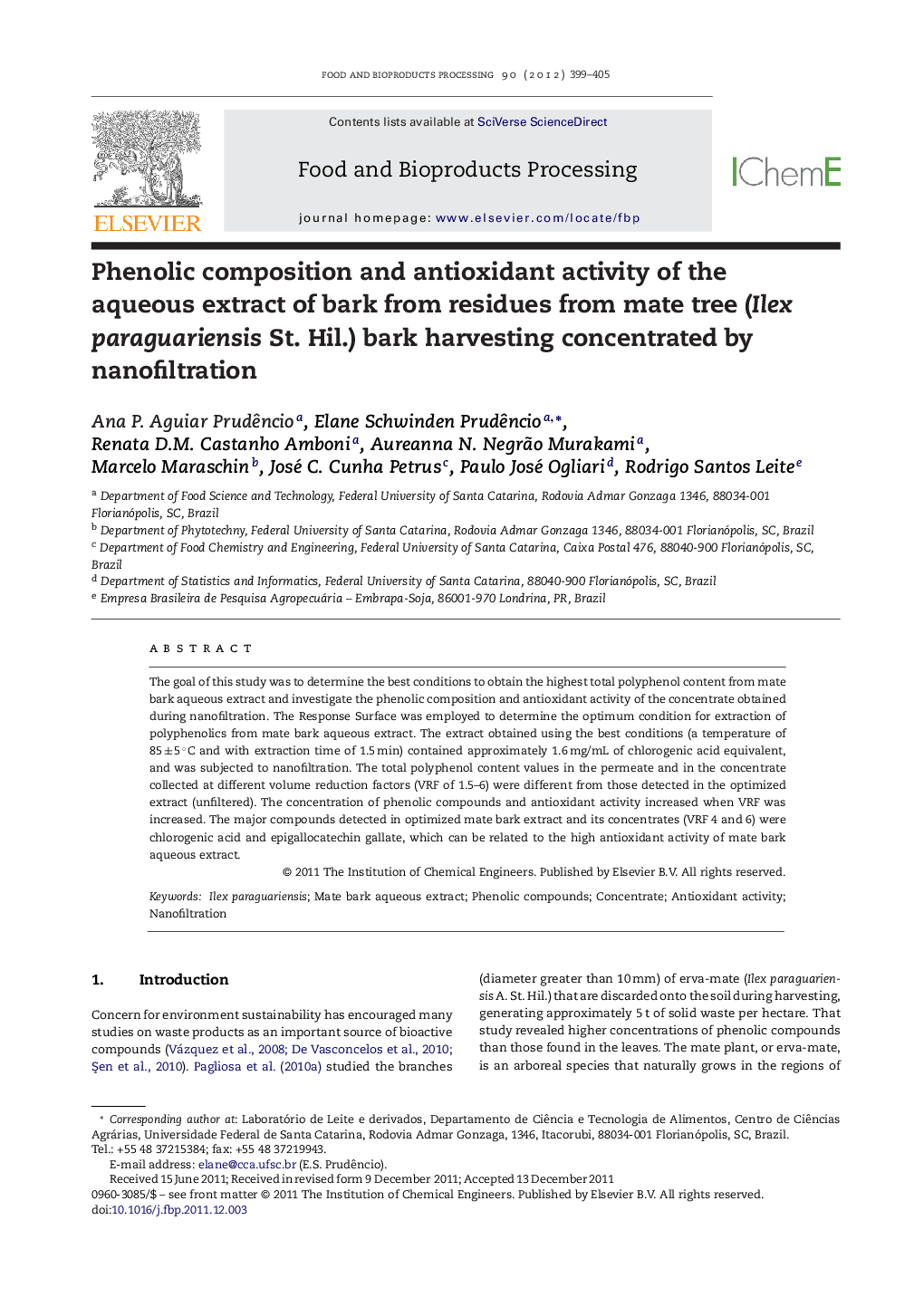| Article ID | Journal | Published Year | Pages | File Type |
|---|---|---|---|---|
| 19054 | Food and Bioproducts Processing | 2012 | 7 Pages |
The goal of this study was to determine the best conditions to obtain the highest total polyphenol content from mate bark aqueous extract and investigate the phenolic composition and antioxidant activity of the concentrate obtained during nanofiltration. The Response Surface was employed to determine the optimum condition for extraction of polyphenolics from mate bark aqueous extract. The extract obtained using the best conditions (a temperature of 85 ± 5 °C and with extraction time of 1.5 min) contained approximately 1.6 mg/mL of chlorogenic acid equivalent, and was subjected to nanofiltration. The total polyphenol content values in the permeate and in the concentrate collected at different volume reduction factors (VRF of 1.5–6) were different from those detected in the optimized extract (unfiltered). The concentration of phenolic compounds and antioxidant activity increased when VRF was increased. The major compounds detected in optimized mate bark extract and its concentrates (VRF 4 and 6) were chlorogenic acid and epigallocatechin gallate, which can be related to the high antioxidant activity of mate bark aqueous extract.
► Use of waste product as source of phenolic compounds. ► Alternative technology for concentration and stability of phenolic compounds. ► Presence of phenolic compounds in aqueous extract and concentrate of mate bark. ► Best condition for obtaining the mate bark aqueous extract. ► Antioxidant activity of mate bark aqueous extract and concentrate.
